Throughout this article, we share eight benefits of investing in non-motorized infrastructure, including economic development, public health, climate resilience, and more.
The pandemic confirmed what many planners and engineers have been advocating for years: walking and biking are critical modes of transportation and recreation that deserve more attention and funding. The pandemic tragically left schools, businesses, and many modes of transportation either closed or significantly modified. Yet, it also brought to light the strategic value of non-motorized infrastructure.
Understandably so, trail use in 2022 is up more than 45% compared to 2019. We've steadily reached a post-pandemic way of living, but many habits – like the rise of outdoor recreation and trail usage – have remained and will remain long term.
The benefits of investing in bicycle and pedestrian infrastructure cannot be denied as communities seek to attract residents, build their tax bases, spark their economies despite limited budgets, ensure transportation equity, promote public health, and address climate change. If properly planned and executed, here are eight benefits of investing in non-motorized infrastructure:
1. Cost savings
Bicycle paths and complete sidewalks are comparatively less expensive than building new roadway infrastructure. While still a large investment, their narrower widths make them a much smaller price tag per linear foot.
In addition to lower project costs, such efforts can also improve safety and comfort for people walking, biking, and driving. Specifically, markings like those shown below can be added at relatively low cost to existing streets to encourage drivers to travel at slower speeds by narrowing their lanes. This can also make them more aware of bicyclists. The addition of the buffer between modes also makes the street more comfortable for people biking.
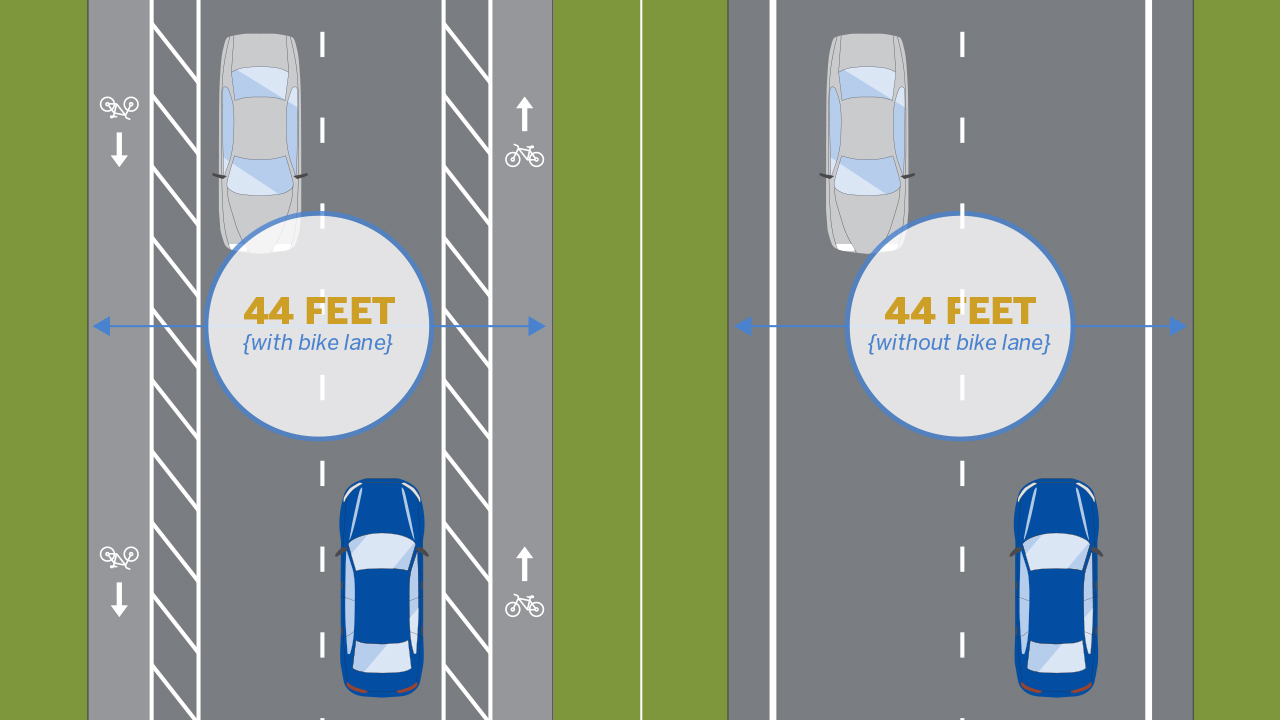
Oftentimes, bicycle infrastructure can be improved by simply changing lane striping/painting on an existing roadway in order to create buffered bicycle lanes.
For example, the City of Farmington in New Mexico has made building new bicycle and pedestrian infrastructure a priority. According to Traffic Engineering Administrator Isaac BlueEyes, before each road paving, overlay or improvement project, the City checks right-of-way and pavement widths to see if there might be room for bicycle lanes. The City often finds room for bike lanes because many of their streets are oversized for the existing traffic.
In addition to making it safer for bicyclists and pedestrians, officials have found that narrower driving lanes result in less speeding and lane swerving as well as fewer traffic accidents. A recent project to remove existing striping and restripe a critical connecting street cost just $4 per ft. ($8,000 for 2,000 ft. of road).
Minneapolis has found similar opportunities to repurpose auto lanes for people walking and biking; including temporary conditions through their pandemic response (snapshot in the image below), and also permanently with projects such as the historic 10th Avenue SE Bridge rehabilitation. The new bridge deck reduced the number of auto lanes from four to two while widening the bicycle lanes and sidewalks. A new curb between the bicycle lanes and auto lanes has further increased comfort and safety for the 1,500+ people who bike or walk across the bridge over the Mississippi River each day.
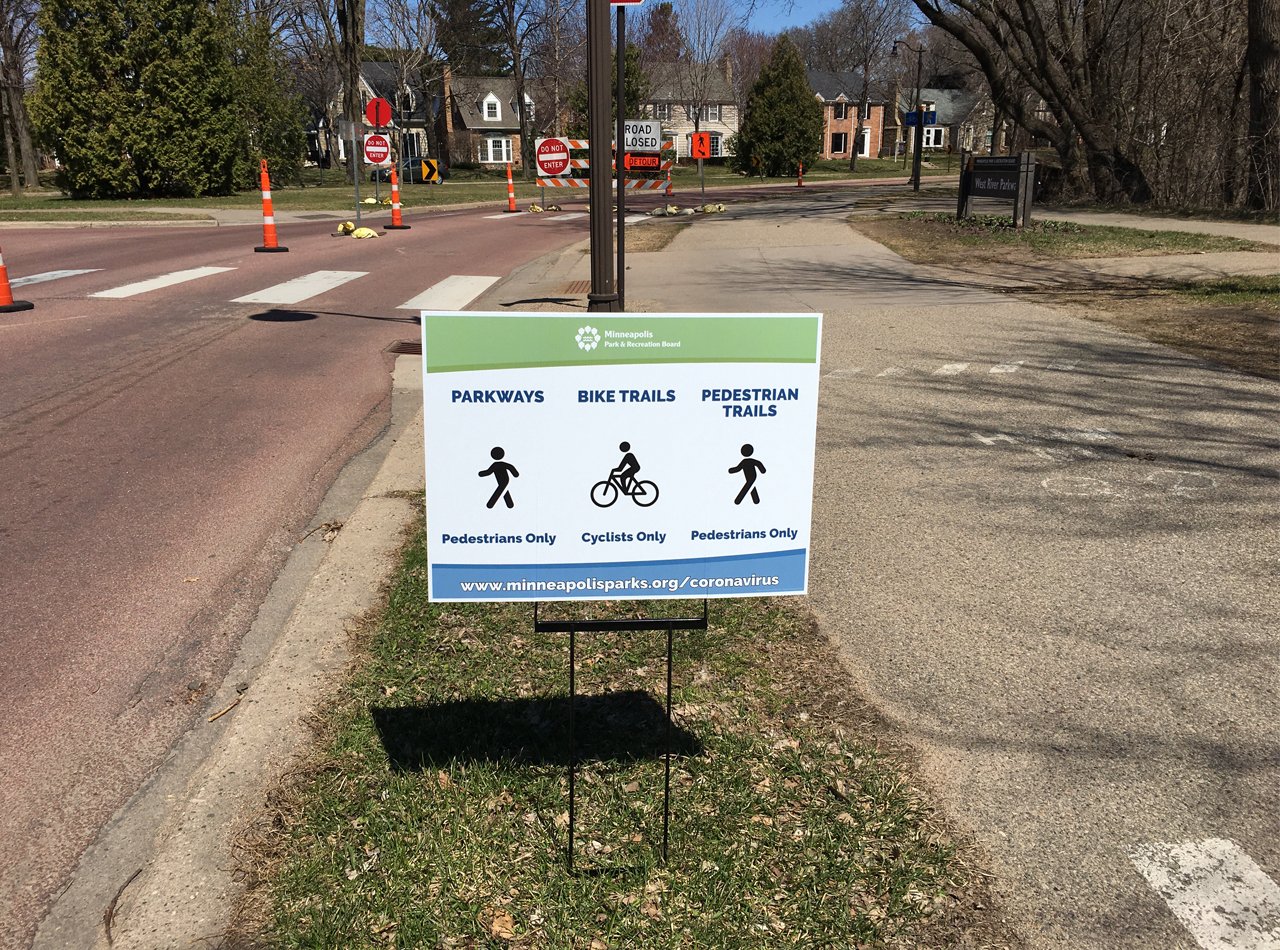
The Minneapolis Park and Recreation Board closed off various parkway segments to auto traffic to accommodate the rise in pedestrian and bicycle demand as a result of the pandemic, while also increasing physical distancing.
2. Increased public health and safety
The 2022 Benchmarking Bike Networks reports that bicyclist and pedestrian fatalities may be reduced through proactive infrastructure, policy, education, and other community investments in bicycling and walking. Here are four of the many examples representing how:
- Curb extensions (or bump outs) are an effective way of increasing safety for pedestrians and bicyclists. By "bumping out" the curb area at an intersection, the crossing distance for pedestrians is shortened. At the same time, visibility is increased between driver and pedestrian. Traffic calming measures like decreasing four-lane roadways to three or two lanes can also help to increase safety by eliminating vehicle weaving and also by reducing the potential for the multiple threat pedestrian crash. This crash occurs on a multi-lane road when a driver stops to allow a pedestrian to pass, but the driver in the adjacent lane cannot see the pedestrian as the line of sight is blocked by the stopped vehicle – exposing the pedestrian to being struck by the second vehicle.
- Traffic signal timing is another method for increasing pedestrian and bicyclist safety. When using leading intervals for bicyclists or pedestrians (LBIs and LPIs), traffic signals are timed to give both parties a head start. This allows either the bicyclist or pedestrian to become established in their space and thus more visible to drivers. For example, a pedestrian may receive the walk signal 3-5 seconds before any conflicting turning vehicle movement begins.
- Rectangular rapid flashing beacons (RRFBs) can also increase safety at pedestrian crossings. These are the bright, flashing, strobe-like indicators activated by pedestrians wishing to cross a roadway. According to the National Cooperative Highway Research Program, pedestrian crashes are reduced by 47% when using RRFBs.
- Outdoor recreation benefits the environment and user health.
Aside from an increase in safety, walking, and biking are an aerobic workout. The Benchmarking Report states that moderate physical activity each week leads to health benefits like preventing hypertension, diabetes, obesity, and asthma. It’s also often said that bicycles don’t pollute. This bears repeating. Once they hit the road, there isn’t a cleaner form of wheeled transportation.
The Journal of Transport and Health concluded that a growing number of bicyclists in a city correlates to safer streets for all users. Ultimately, the more bicycle and pedestrian infrastructure you have, and the more strategically it's planned for and placed, the safer and more active your community will be.
3. Economic development
Many baby boomers, Gen X, millennials and Gen Z are bringing new ways of thinking to their housing searches – such as being willing to rent rather than buy, recognizing that smaller cities are modernizing, and offering similar benefits as large metro areas, and desiring recreational opportunities as opposed to wide streets, cramped parking garages, and endless traffic. Simply stated, more people regardless of generation are looking to live and work in areas that support their hunger for outdoor recreation opportunities and desire to commute by bike or foot. This creates economic development opportunity for your community.
Trails, outdoor recreation areas and nature-interaction opportunities were growing in demand prior to the pandemic – as people seek ways to remain active while having fun. They are growing even more so in the midst of it. As a result, the most strategic communities are seeking ways to create opportunities for walking and biking for daily travel as well as recreational running, hiking, camping, fishing, kayaking, and more. These communities realize one way to become more inviting to people of all generations is by becoming a destination they not only want to live in, but a place they want to visit.
Investing in bicycle and pedestrian trails that connect to recreation and retail spaces, bike repair stations, bike lanes, wide and pedestrian-friendly sidewalks, as well as walkable communities, to name just a few of the opportunities, can help you create a community that draws people in – therefore drawing in new businesses, events, development, and a growing tax base.
4. It may already exist
In smaller towns and more rural areas, there's a good chance off-road bicycle and hiking trails already exist. Though, they may not be officially sanctioned trails. Whether these are unimproved roads, old rail corridors, logging roads, social trails, irrigation canals, or simply volunteer trails, sometimes all you need to get started is the ability to map and connect these informal systems. They often tell you where people already want to be, providing built-in demand. Of course, be careful that the existing network is on public land, and/or make sure easements have been granted permission by the private land owner.
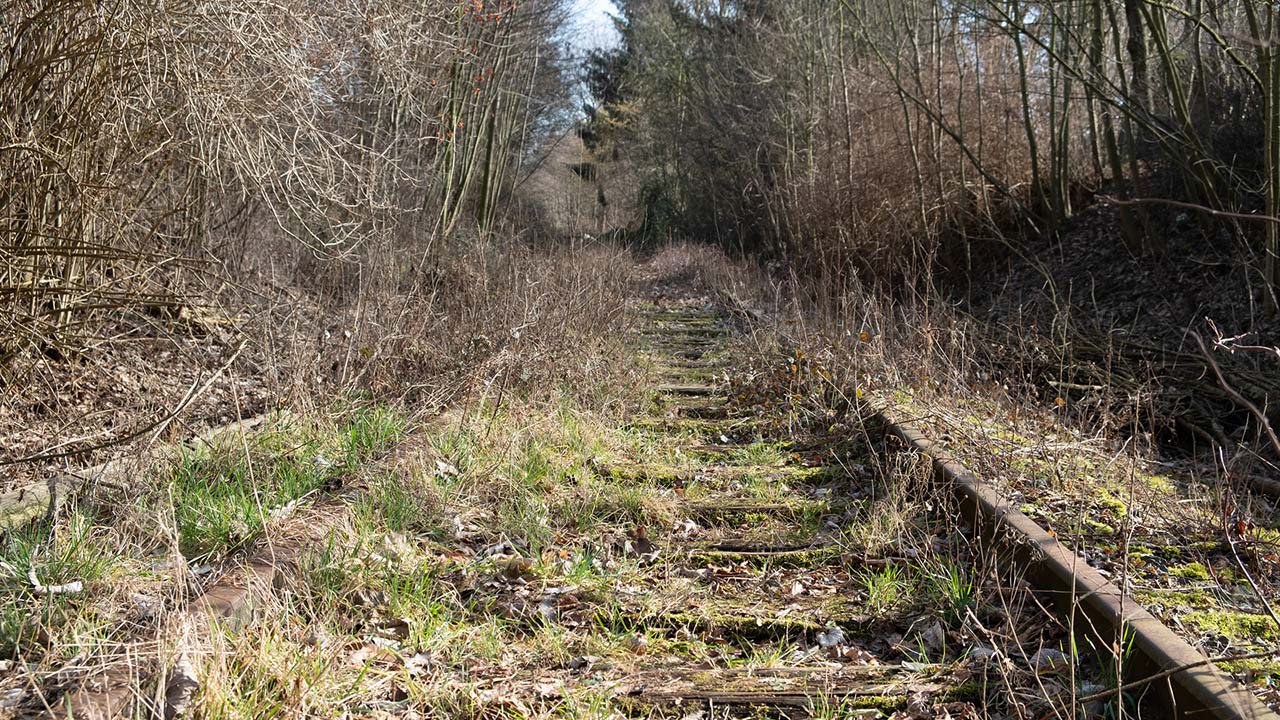
Many communities convert abandoned railroad beds into bicycle and pedestrian paths. This may also be an opportunity within your community.
Trails 2000 is one example of how communities can uncover potential trail opportunities then educate the public on how they can be maintained and used. Trails 2000 is a City of Durango, Colorado trail advocacy group founded in 1989. The non-profit exceeded their goal of building 200 miles of trails by the year 2000 (hence the name), and today maintains over 300 local miles of trail. The non-profit's mission is to plan, build, and maintain the local trail network; educate trail users; and encourage connectivity on roads, paths, and trails.
According to Trails 2000 Executive Director Mary Monroe Brown, "connectivity" is a critical part of Durango's trail infrastructure. Connectivity refers to how hard-surface trails and bicycle paths intersect with soft-surface trails to create a vibrant trail community. Because of the group’s work, Durango is frequently listed as one of the best walking, hiking, and bicycling destinations in the country. Educating and engaging the public and local stakeholders, uncovering potential areas for trail, and partnering with local groups can have a dramatic impact on your ability to create community-wide connectivity.
5. Increased tourism and recreation potential
The residual economic effects of drawing in tourism become obvious the more your community invests in outdoor recreation and bicycle and pedestrian infrastructure. Hotels, supermarkets, restaurants, shops, local events, and more are just a few of the businesses that benefit when out of town guests are attracted. In kind, your collective community and economy can benefit.
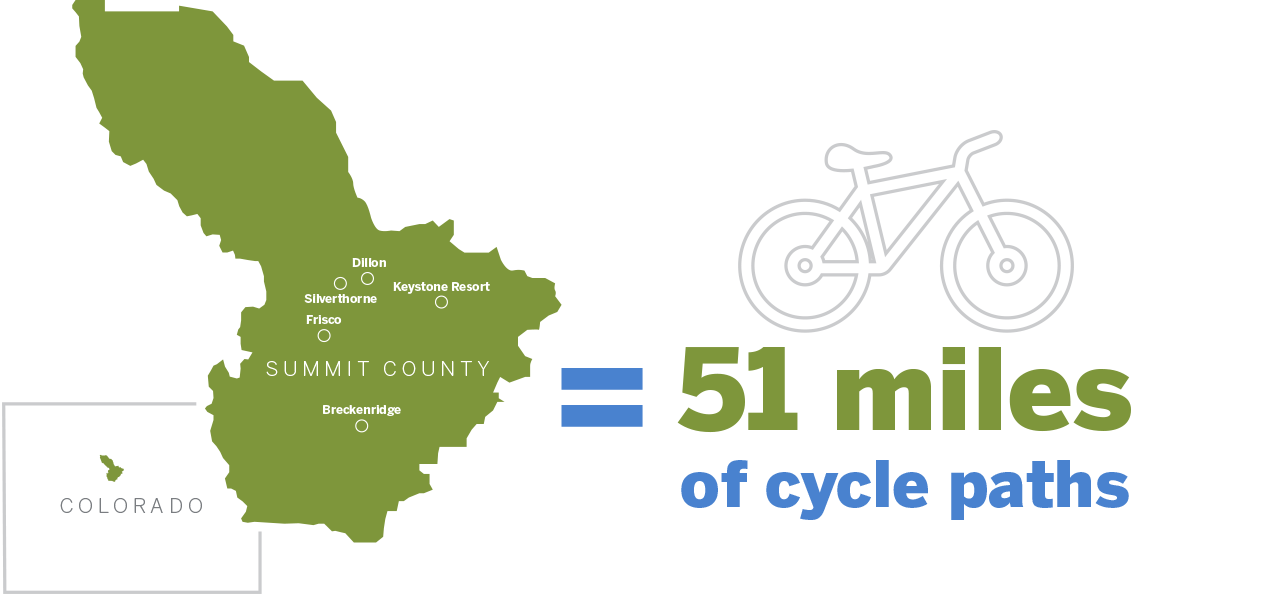
A system of 51 miles of bicycle paths turned the traditionally snow-focused areas of Colorado into top summer bicycle destinations.
For example, Summit County in Colorado and the Colorado towns of Breckenridge, Frisco, Dillon, Silverton, and Keystone Resort are well-known winter recreation destinations. But what might not be as well-known is the fact that these communities began investing heavily in bicycling infrastructure in the 1980s. Today, they have a connected system of 51 miles of bicycle paths and are widely regarded as some of the top destinations for bicycling and hiking in the U.S. As a result, these areas have grown from solely winter-based economies to year-round destinations.
6. Equity and social justice
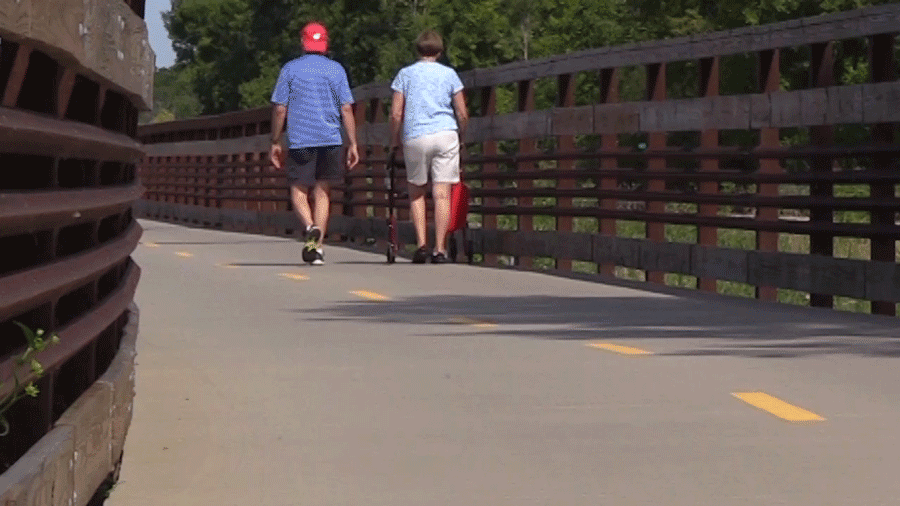
Simply stated, not everyone drives. There are people who don’t have access or the ability to drive a vehicle, and many smaller cities lack quality public transit to serve these communities. Convenient access to reliable transportation is essential for the livelihood and well-being of the community. It's particularly important for underrepresented populations, such as people walking in low-income communities, people of color, and older adults. These communities typically rely more heavily on public transportation and non-motorized forms of travel, and are disproportionately represented in the number of people killed while walking according to Dangerous by Design 2022, Smart Growth America's three-year report on pedestrian safety.
Thus, it's incumbent upon transportation professionals and policy makers to develop well-planned, safely executed, and comfortable facilities for all users. This includes people who require assistive devices such as wheelchairs, pedestrians of all ages and abilities, bicyclists, strollers, and scooters. Robust multimodal transportation options can be a great equalizer and life-saving, providing low-cost and accessible options for commuting to work, getting an education, grocery shopping, accessing healthcare, and other basic yet instrumental activities.
7. Increased community wellness
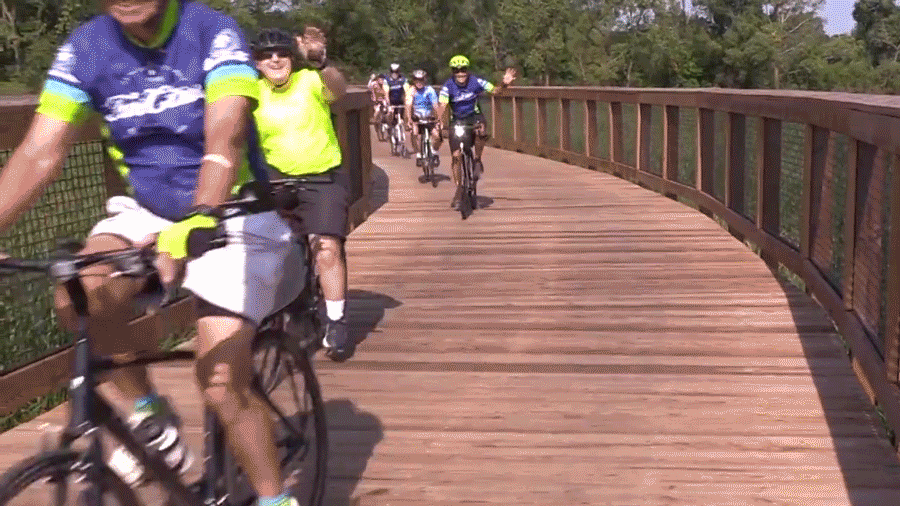
The Center for Disease Control reports that physical inactivity is a significant contributor to the steady rise in obesity, diabetes, heart disease, stroke, and many other chronic health conditions of concern throughout the U.S. Runners and bicyclists are a community; people gather in formal and informal clubs to run and ride across cities, mountains, and parks. Many people enjoy these endeavors, and many are active to maintain or improve their health. Others take part because they are steadfast in their desire to reduce their carbon footprint and improve our environment.
When cities or geographic areas are recognized as hotbeds for this type of activity, people travel to these areas for the experience – and they often come back, sometimes to live.
Thousands of communities hold annual bike races and walks to support important charity causes. The same can be said for races like marathons as well as 5K and 10K events, which often take place on paved bicycle infrastructure. These types of events garner community support and are excellent for rallying people around important causes. This benefits our quality of life and the greater good! When we promote active transportation by implementing quality trails, sidewalks, bicycle facilities, and open spaces, we support these goals and causes.
8. We’re all pedestrians
Bicycle and pedestrian infrastructure supports everyone in a community, whether we need or choose to bike or walk to get to our jobs, schools, stores, and services. We all want to feel safe and comfortable. We want to feel connected and have access to the communities we live in. We also want to find ways to be active while having fun, whether individually or with our families. Creating a framework that supports non-motorized travel is an investment we can all benefit from.
Communities can see upticks in economic prosperity as well as public health and safety. As we continue on in this new era and continue to see innovative approaches to how we live, work, and play, bicycle and pedestrian infrastructure will continue to rise in both popularity and importance. Now is the time to act!
About the Authors

Nancy Dosdall, AICP, LEED Green Associate, is a senior planner and project manager with 35+ years of experience in land use planning and entitlement. Nancy is proficient in public engagement and finding common ground amongst stakeholders to develop community-supported plans, enjoys the outdoors, and is a proponent of non-motorized infrastructure that is accessible to all.

Heather Kienitz, PE*, is a senior multimodal traffic engineer and SEH principal with 20+ years of experience leading a variety of transportation projects. She is dedicated to developing highly inclusive, context-sensitive solutions for built environments, and is particularly experienced with the retrofit, reconstruction of new bicycle and pedestrian facilities, and enhancements.
*Registered Professional Engineer in MN

.png?width=113&name=SEH_Logo_RGB%20(1).png)
